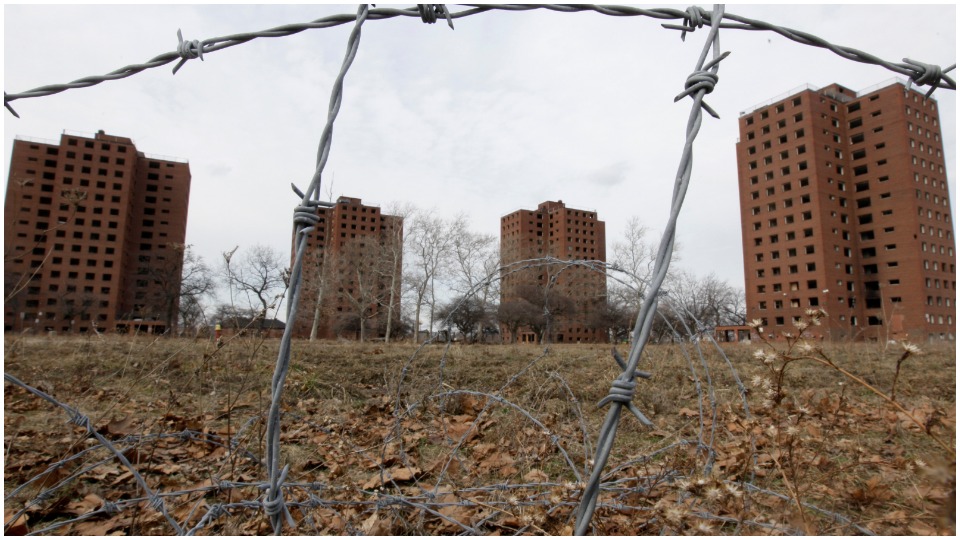
What do you picture when someone refers to “Trump’s base”? If you’ve watched television coverage of his rallies or read any of the dozens of articles in which reporters and commentators try to explain Trump’s appeal, then you probably imagine white people wearing “MAGA” hats and t-shirts chanting “Lock her up” or “Send her back” in an arena in a mid-size Midwestern or Southern city. You might assume they include laid-off industrial workers, residents of declining cities or rural areas who view immigrants as a threat, people who spend their weekends at gun shows, and uninsured people who resent the “government intrusion” of the Affordable Care Act.
This image might come to mind when you read that polls show support for Trump increasing when he tweets racist jibes at women of color in the U.S. Congress or calls a black Representative’s district a “rat and rodent infested mess.” While some shake their heads in frustration at these poor foolish dupes, some also feel some empathy. It isn’t their fault they were “left behind” by the global economy or laid low by the exploitations of the opioid scandal. They just aren’t smart enough to see that they’re being manipulated.
As several recent articles have pointed out, this story is wrong—though it’s probably reassuring to educated urban middle class and elites. It suggests that the problem with this country lies somewhere out there, among people who can easily be labelled as racist, xenophobic, homophobic, old-fashioned, and most important, working-class.
We’ve been talking regularly with reporters about working-class voters—by which they almost always mean whites—since 2007. Then, reporters called then to ask whether white industrial workers would vote for an African American or a woman. Now they’re asking why white working-class people would be drawn to Trump’s anti-immigrant, racist, and sexist bravado.
We could say plenty about the complicated relationship between racism and the white working class, but there’s more to the story of white racism. While Trump does attract significant support from the white working class, middle-and upper-class whites are also an important part of Trump’s base. After all, if Trump’s support among Republicans rises after his racist outbursts, that includes the core of the party, and they tend to be whiter, more rural, older, and more religiously conservative than Democrats. They are also at least slightly better off. Democrats win more votes from people with college degrees, the most commonly-used basis for pollsters to talk about class, but they also win more lower-income voters. Republicans take the lead—as Trump did in the 2016 vote—among those with incomes of $50K or more.
So while some of his white working-class fans might respond with open approval to Trump’s racist appeals, it’s also probably true that many of his more educated, better-off supporters embrace it as well. Some might tolerate the president’s nasty remarks because they appreciate his tax cut or his anti-abortion, pro-business Supreme Court nominees. But many of his policies, like his tweets, reflect racial resentments that appeal to a wider range of voters than class stereotypes suggest.
Some appreciate Trump’s racism because it violates social rules they find limiting. As Kevin M. Kruse suggested in a New York Times op-ed, Trump voices the resentment many white voters—of all classes—feel about not being able to say what they think about women, people of color, and LGBTQ people. They genuinely don’t get why some of what Trump says is racist. Instead, they rankle at the idea that it’s never acceptable for white people to criticize people of color. For many, Trump’s statements reassure them that they are not racist, they’re just not “PC.”
This points to a core problem in discussions of racism: the focus on individual attitudes rather than on structural inequities. To call someone racist is to judge their character. To hate people of color because of their skin would be racist, and supposedly only bad people are racist.
Amid discussions about whether or not Trump is racist, we forget that racism is structural. Hating people of color isn’t a prerequisite for investing in a system that provides most white people with better health care, better educations, more power in the workplace, higher incomes, and more opportunities to get ahead and secure a comfortable life. As Richard Reeves argues in Dream Hoarders: How the American Upper Middle Class Is Leaving Everyone Else in the Dust, Why That Is a Problem, and What to Do About It, many well-educated, well-off people seek out opportunities to pass their privileges on to their children. We don’t think that’s racist. We think it’s good parenting.
After Nikole Hannah-Jones’s New York Times commentary arguing that white people’s rejection of school busing in the 1970s and ’80s reflected resistance to having their children go to school with black people, several white parents wrote in to insist that they weren’t racist. They just wanted their children to attend a better school. Yet the school in the white neighborhood was likely better because of higher incomes of white families and the higher property values in white neighborhoods, and the children who attend that school deal with less day-to-day anxiety and disruption than those in more challenged neighborhoods.
Those economic conditions reflect racial disparities reinforced by government and business practices. Did white parents create those economic conditions? Not directly, though they probably helped elect the politicians who implemented the policies, and they might not recognize how those policies reinforce racial inequalities and divisions.
They believe in meritocracy. If the system is fair, as they believe it is, then whatever getting ahead they eked out reflects their intelligence, abilities, and hard work, not a system that is rigged or unequal. They may well see Barack Obama’s two terms as president as proof: If America elected a black man, doesn’t that show that the deserving can rise despite racism? So why should we believe that racism keeps others down?
Yet as a 2018 report from the Economic Policy Institute shows, African Americans continue to lag far behind whites in every economic category—education, income, home ownership, unemployment, and incarceration—despite their rising education rates and incomes. Perhaps Trump’s white supporters base their vision of the black experience in America on what they see on TV, which today offers more and more positive images of people of color, especially African Americans, than a few decades ago. In recent years, in part because of Black Lives Matter, the rise of white supremacist activism, and anti-immigration efforts, racism and racial inequality have become center stage issues in American politics. Yet during the same period, the white middle-class have seen their wages stagnate, their jobs become less secure, and their children struggle to achieve the trappings of middle-class life. That breeds resentment.

A faith in meritocracy may also explain why instead of blaming corporations or Wall Street for not raising wages or for cutting jobs, many white middle-class voters hold on to the belief that good business principles require companies to make those choices. They worry about how to pay for their children’s or grandchildren’s college tuition but don’t question Republican cuts to state funding for education. They wonder if their children will ever find good jobs or afford to buy homes of their own. Yet they hold on to the hope that they or their children will someday be in a position to reap the benefits of conservative tax policies.
To be fair, Democratic voters also make choices that shore up their economic and racial privilege, though they might be somewhat more likely to wrestle with their decisions or to acknowledge the inequities. Republicans seem more likely to support pro-business policies and tax cuts, while Democrats believe that everyone will do better if we ensure more opportunities for those without their advantages.
Of course, it’s easier for candidates to criticize Trump as a racist than it is to critique structural racism. And dismantling discriminatory policies, from school funding to zoning ordinances, will require hard work that will challenge middle-class and elite voters across the political spectrum. If Democrats want to do more than talk about racist attitudes, they need to take on the injustices built into the system.
This article originally appeared in NewGeography; this excerpted version appeared
at the Working-Class Perspectives site, hosted by Georgetown University’s Kalmanovitz Initiative for Labor and the Working Poor.











